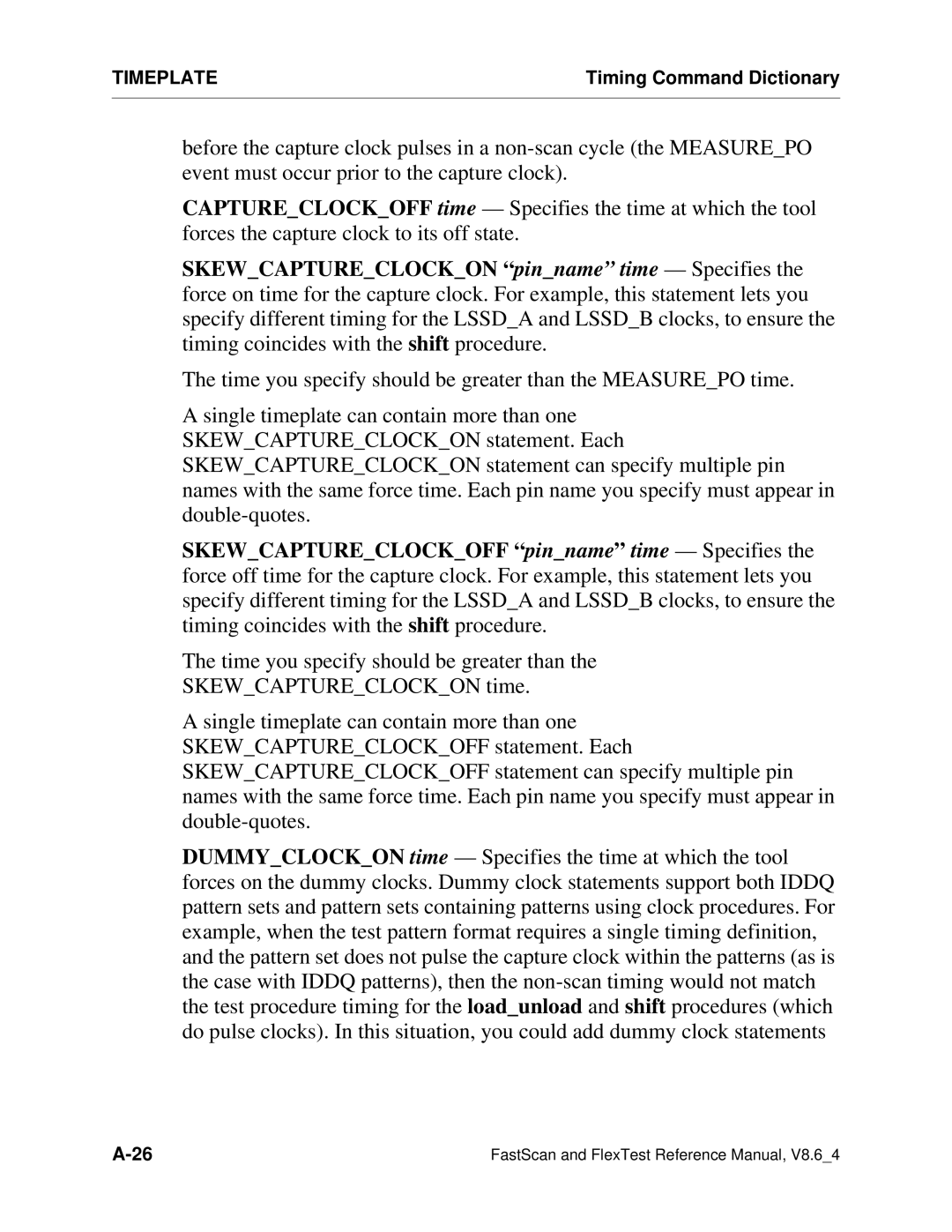TIMEPLATE | Timing Command Dictionary |
|
|
before the capture clock pulses in a
CAPTURE_CLOCK_OFF time — Specifies the time at which the tool forces the capture clock to its off state.
SKEW_CAPTURE_CLOCK_ON “ pin_name” time — Specifies the force on time for the capture clock. For example, this statement lets you specify different timing for the LSSD_A and LSSD_B clocks, to ensure the timing coincides with the shift procedure.
The time you specify should be greater than the MEASURE_PO time.
A single timeplate can contain more than one SKEW_CAPTURE_CLOCK_ON statement. Each SKEW_CAPTURE_CLOCK_ON statement can specify multiple pin names with the same force time. Each pin name you specify must appear in
SKEW_CAPTURE_CLOCK_OFF “ pin_name” time — Specifies the force off time for the capture clock. For example, this statement lets you specify different timing for the LSSD_A and LSSD_B clocks, to ensure the timing coincides with the shift procedure.
The time you specify should be greater than the
SKEW_CAPTURE_CLOCK_ON time.
A single timeplate can contain more than one SKEW_CAPTURE_CLOCK_OFF statement. Each SKEW_CAPTURE_CLOCK_OFF statement can specify multiple pin names with the same force time. Each pin name you specify must appear in
DUMMY_CLOCK_ON time — Specifies the time at which the tool
forces on the dummy clocks. Dummy clock statements support both IDDQ pattern sets and pattern sets containing patterns using clock procedures. For example, when the test pattern format requires a single timing definition, and the pattern set does not pulse the capture clock within the patterns (as is the case with IDDQ patterns), then the
FastScan and FlexTest Reference Manual, V8.6_4 |
